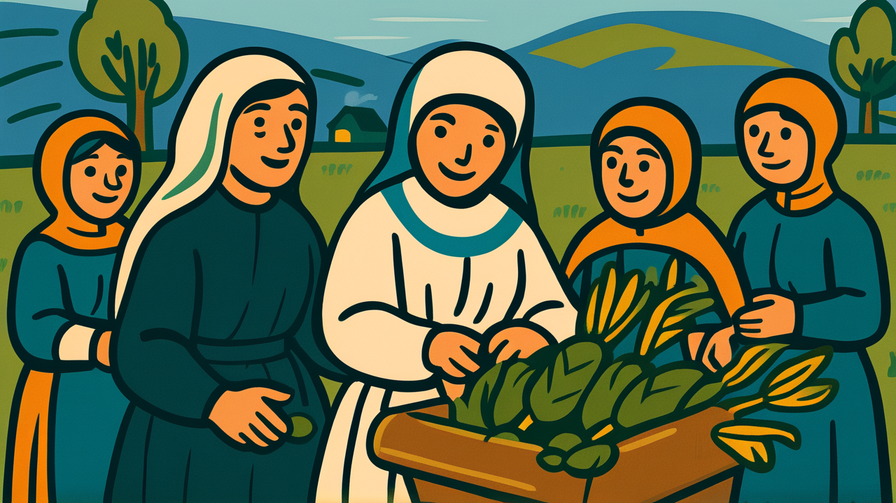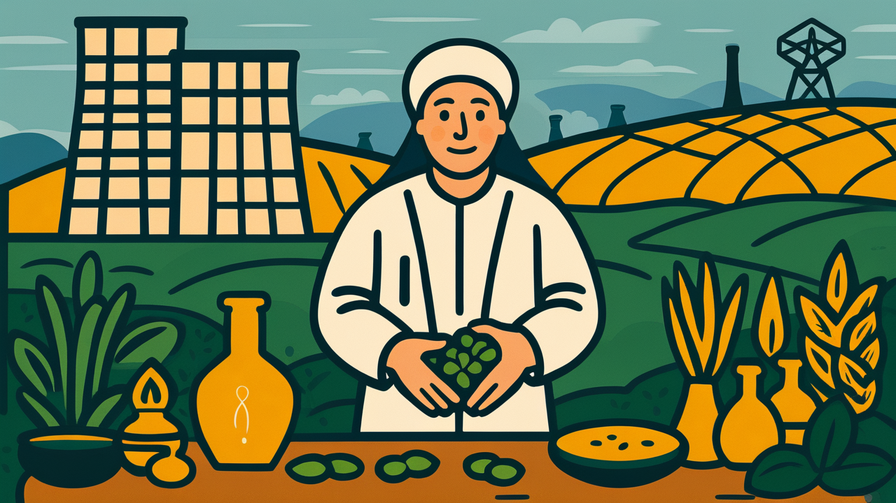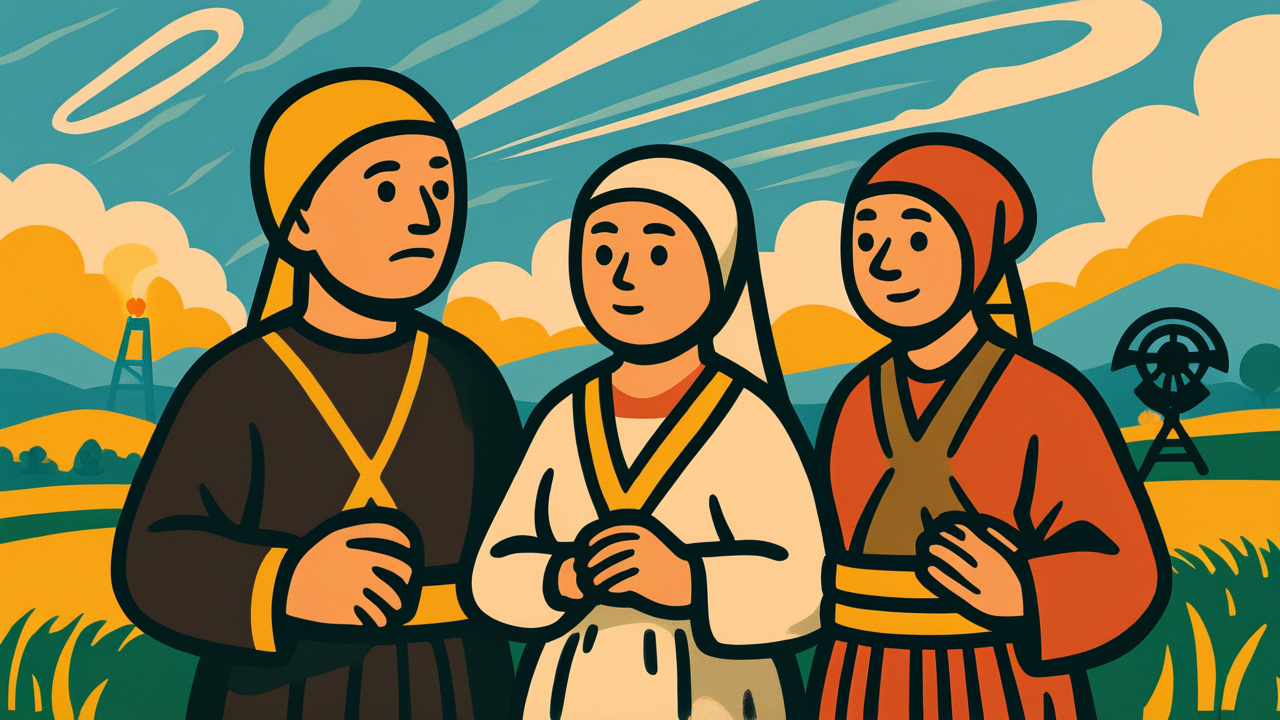[Disclaimer] This article is reconstructed based on information from external sources. Please verify the original source before referring to this content.
News Summary
The following content was published online. A translated summary is presented below. See the source for details.
Ukrainian writer Yulia Stakhivska explores how the 1986 Chernobyl nuclear disaster paradoxically sparked a renaissance in traditional Ukrainian folk medicine and herbalism. Following the catastrophe, as modern medicine struggled to address radiation exposure effects, many Ukrainians turned to ancestral knowledge about healing herbs. Communities began documenting and sharing traditional remedies that had been passed down through generations but were being forgotten in the Soviet push for modernization. Stakhivska’s essay describes how elderly villagers became sought-after healers, teaching younger generations about plants like St. John’s wort, chamomile, and yarrow—herbs traditionally used for purification and healing. This revival wasn’t just about physical healing; it represented a cultural reclamation. The disaster forced Ukrainians to reconnect with their land, even as parts of it became contaminated. New folklore emerged, mixing ancient beliefs with modern anxieties about radiation. Stories arose about certain herbs growing stronger in irradiated soil, and rituals developed around gathering plants from “clean” areas. This cultural phenomenon demonstrates how communities facing unprecedented challenges often return to traditional knowledge systems, adapting ancient wisdom to contemporary crises.
Source: Global Voices
Our Commentary
Background and Context

On April 26, 1986, the world changed. The Chernobyl nuclear power plant in Ukraine exploded, spreading radiation across Europe. But from this disaster came an unexpected cultural revival—Ukrainians began rediscovering the healing traditions their grandparents had used for centuries.
Imagine suddenly not trusting modern medicine or hospitals because they couldn’t protect you from invisible radiation. Where would you turn? For many Ukrainians, the answer was in their own backyards—the herbs and remedies their ancestors had relied on for generations.
Expert Analysis
Yulia Stakhivska’s essay reveals a fascinating paradox: how a symbol of modern technological failure led people back to ancient wisdom. Here’s what happened:
The Knowledge Keepers: Elderly villagers, once dismissed as old-fashioned, suddenly became valuable teachers. They knew which plants could help with nausea, which could boost immunity, and which had been used for “purification” for centuries. Young people who had moved to cities returned to learn from their grandparents.
Adapting Ancient Wisdom: Traditional herbs took on new meaning. St. John’s wort, traditionally used for depression and wounds, was believed to help with radiation sickness. Yarrow, an ancient healing herb, became part of “cleansing” rituals. While science doesn’t support these herbs treating radiation, the psychological comfort they provided was real.
New Folklore Emerges: Stories began circulating about herbs growing differently in irradiated soil—some claimed they grew stronger, others said they glowed faintly at night. New rituals developed around gathering herbs only from “clean” areas, mixing scientific understanding of radiation with traditional spiritual practices.
Additional Data and Fact Reinforcement
The cultural impact of this revival:
• Traditional knowledge preservation: Hundreds of herbal remedies were documented that might have been lost
• Intergenerational connection: Young Ukrainians reconnected with elderly relatives
• Cultural identity: Folk medicine became a symbol of Ukrainian resilience and identity
• Modern herbalism: Ukraine now has thriving herbal medicine communities mixing traditional and modern knowledge
Common herbs in Ukrainian folk medicine:
• Chamomile: For calming and digestive issues
• St. John’s Wort: For mood and healing
• Yarrow: For wounds and purification
• Calendula: For skin healing
• Nettle: For strength and cleansing
Related News
This phenomenon isn’t unique to Ukraine. Across the world, we see communities turning to traditional knowledge during crises. During COVID-19, many cultures revived traditional remedies. In areas affected by environmental disasters, indigenous knowledge often provides coping strategies that modern science overlooks.
The Chernobyl zone itself has become a fascinating study in nature’s resilience. While humans fled, plants and animals thrived. Scientists study how some organisms adapted to radiation, and surprisingly, the area has become an unintended nature reserve. This parallels how Ukrainian culture adapted—finding ways to grow and preserve traditions even in the shadow of disaster.
Summary

The Chernobyl disaster, while tragic, catalyzed an unexpected cultural renaissance in Ukraine, reviving traditional herbal knowledge and creating new folklore that blends ancient wisdom with modern realities. Writer Yulia Stakhivska captures how communities facing unprecedented challenges often find strength in their cultural roots.
For students, this story offers powerful lessons about resilience, cultural preservation, and how traditional knowledge remains relevant. Whether facing climate change, pandemics, or other challenges, understanding how previous generations survived and healed can provide both practical knowledge and emotional comfort. The Ukrainian experience shows that progress doesn’t always mean abandoning the past—sometimes it means rediscovering and adapting ancestral wisdom for modern times.
Public Reaction
Ukrainians have embraced this cultural revival, with many young people learning herbalism from their grandparents. Environmental activists see it as a model for sustainable living. Scientists remain cautious about medical claims but acknowledge the psychological benefits of cultural practices. The global wellness community has shown interest, though Ukrainians emphasize this isn’t about trends but cultural survival. Some worry about “disaster tourism” commodifying their traditions.
Frequently Asked Questions
Q: Can herbs really treat radiation sickness?
A: No scientific evidence supports herbs treating radiation exposure. However, the psychological comfort and community support around these practices had real health benefits for stressed populations.
Q: Is it safe to use plants from near Chernobyl?
A: No. Plants from the exclusion zone can contain dangerous levels of radiation. The revival focused on herbs from uncontaminated areas and preserving knowledge, not using irradiated plants.
Q: How can I learn about traditional herbal knowledge from my culture?
A: Talk to elderly relatives, visit cultural centers, and look for ethnobotany resources specific to your heritage. Many cultures have herbalism traditions worth preserving.


